In part one, we explored what integration is, and why it is so important. Now let’s dive into practical and useful techniques for the integration of breathwork.
Integration of breathwork – returning home
What do you do when you return home after a life changing experience? Because you may have changed., but the world probably hasn’t. Especially if you have been on a breathcamp or retreat, be aware that going back into your usual environment can be a bit of a shock. And so, choose where you go and who you see carefully. Integration of breathwork starts with intelligent choices about where and who you spend your time around. At least in the beginning. Some of your friends and family may be more open to your experience than others. Others may have opinions and ideas about your experience that don’t match yours. And it’s important that you let your experience mature without different beliefs and values filtering it. Be prepared to ask people for some space if that feels necessary. And consider that one of the changes you may need to make is to set new boundaries, agreements, and new ways of being with certain people. Consider staying away from social media for a period also. It’s easy to get drawn back into old ways of thinking and old emotions when you plug back into a constant stream of other people’s lives.
Nutrition and rest for integration
Breathwork has as one of its benefits a type of detoxing effect. And that means both physically and mentally. Therefore, integration of breathwork also includes being careful what you put back into your body. And taking the time to rest and recover as your body and mind acclimate to new thoughts and potentially new habits. Movement of any kind requires recovery. And this includes movement of thoughts and beliefs. This is a time to go easy on yourself and not have too high an expectation. If you haven’t already done so, introduce a higher content of plant-based foods into your diet. Plants have a much higher content of antioxidants than other forms of food. And antioxidants are of major benefit to health by neutralising oxidative stress. De-stressing the body with nutrition will help you adopt new habits and activities. Introduce more positive streams of information into your mind too if you can. This may require changing what you watch and listen to.
Integration of breathwork through writing and artistic expression
Transferring your thoughts and feelings out onto paper can be helpful. Journaling or drawing helps you to externalise emotion and thought and see it from a different perspective. Journaling and artistic expression develop observation., and observation is key to understanding. This allows you to decide if something is valid for your ongoing experience or if it needs to be left behind. Part of the process of integration of breathwork, is deciding what to start doing and what to stop doing. By keeping a journal, you will start to see patterns. And with this knowledge you can make new decisions. You can ask the question., does this pattern serve me or not?
Getting support from others
Nothing needs to be done alone. Commit to asking for help if you need it. And consider having someone who will hold you accountable to your new decisions. Perhaps you identified something about yourself that you are unsure how to deal with. Reach out to your fellow breathers and community or join/create a group dedicated to sharing experiences. Group integration practices can be hugely beneficial and motivational. And this sense of community encourages connection which is a big part of what integration is about.
Integration of breathwork self-care
Integration of breathwork includes going easy on yourself and being grateful for the small things. There is always something to be grateful for. Start by changing something in your environment at home to remind yourself that you have changed. Maybe by rearranging your bedroom. Do kind things for yourself. Consider what you would do for someone special and do that for yourself. Would that be a warm bath, a massage, a night out at the movies and some favourite food. Use these and other forms of self-care as kindness and not comfort, however. What’s the difference? Comfort can sometimes be used to avoid feeling. An example being eating things you know aren’t good for you but feel good to eat. Integration involves feeling and validating those feelings, not suppressing them with distractions.
Should you continue to breathe when integrating
Yes. Take time to breathe and meditate. This may seem obvious, but just because you have finished your breathwork retreat or course, doesn’t mean the work is over. You got to where you are with the breath. And the breath can keep you moving in a positive direction. It may be that you latched onto something during your breathwork sessions that needs further clarification. And continuing to breathe can give you that clarification. Be gentle with the frequency and intensity of these practices. Listen to your body and if you need a break or only short sessions, then do that. Sometimes a slow-paced session is just what you need. You don’t always need to be going deeper. Make the environment you breathe in nurturing and peaceful. And go into a session with the only intention being to let go into the experience. Insights tend to appear to us in moments of stillness, silence, or presence. And so meditative practices should form at least part of your integration of breathwork experience.
How to use grounding to help with the Integration of breathwork
One of the effects of breathwork journeys is the tendency to go into profound altered states of consciousness. And the result of this can sometimes leave you feeling a little disconnected from reality. Or even a little out of body. Sometimes you may have heard someone say that they haven’t landed yet after an experience. This is common and is an effect of these altered states. Nature and water are great ways to ground yourself. If you can swim that is ideal. Or even a shower can help. And one of the best ways to ground yourself is in nature. Walk on the grass, hug a tree (they like it 😊), enjoy the sun and sound of the birds. Grounding has some surprising effects on health in general. And being in nature is a powerful way to practice being mindful also. Mindfulness and integration of breathwork go hand in hand.
Link: Effects of grounding on health and wellbeing https://www.ncbi.nlm.nih.gov/pmc/articles/PMC4378297/
Integration of breathwork and the role of mindfulness
Mindfulness has gotten a lot of attention over the last decade. And rightly so. Studies consistently show that being mindful has many physical and mental health benefits. Mindfulness is presence and awareness. Seeing, hearing, feeling, smelling, and tasting all that is there to be experienced. To be connected to everything around you, you need to be aware of it. And this applies to being connected to yourself also. Spend time expanding your awareness as a practice. And remember that being mindful includes awareness of your feelings and sensations also. Felt sense meditations and breathing into sensations during breathwork involve mindfulness. And being that the integration of breathwork is an ongoing process, mindfulness should be at the forefront of your practice. Integration involves coherence. Which means creating a unified whole. And that is an ever-evolving ongoing process also.
The difference between mindfulness and judgement
Mindfulness teaches an attitude of awareness, non-judgement, and curiosity of everyday experience. It is pure observation. Judgement is creating meaning based on experience and tends to cause anxiety about the future. And this is not useful for integration. Anxiety is one of the biggest obstacles to integration. Because it’s very hard for an anxious mind to process new information. Mindful observation results in noticing the lessons of life experiences. And noticing the lessons in an accepting way, means you’ll get the most benefit. Mindfulness has its roots in Buddhism. A strong sense of self (Ego) is seen as a source of distress. A loss or reduction of this sense of self, is one possible outcome of breathwork experiences. And this is also the ultimate goal of mindfulness. By practising mindfulness, you get better at being calm in the presence of new information. Mindfulness includes observation of your own thoughts and habits. And done in a non-judgmental way, results in patterns of ‘suffering’ becoming obvious. And when these patterns do become obvious remember an important fact: ‘Pain is real., suffering is optional’.
Link: Mindfulness and integration in the brain https://www.ncbi.nlm.nih.gov/pmc/articles/PMC2566758/
How the need for consistency can impact the integration of breathwork
Be aware that one of the strongest human desires is for consistency of thoughts and action. This means that previous habits will be very tempting to continue. And it also means that other people will want you to be consistent too. Often, proof of change is that you respond differently to the same situation., not that the situation suddenly changes or disappears. How are you going to navigate that? What will you do if you catch yourself behaving in an old, outdated way again? How will you respond differently to other people and situations? The integration of breathwork involves these important questions. As without an answer, the result is often a feeling of failure, giving up, and the good work you did in your breathwork journey being fleeting instead of lasting.
Integration and changing your future
These important questions lead to a powerful way to integrate new decisions and ways of being into your future life. It is something I learnt and modified from the field of NLP and hypnosis called ‘future pacing’. The idea may seem too simple to be useful at first. But it uses the specific ways the mind works to install behaviours and thoughts into the future. And added are distinctions that cover the most common reasons that the integration of breathwork fails for some people. We are creatures of habit. And we don’t like to fail. So, the answer is to create new habits and change what failure means. And this is far better done in advance than in the moment of choice. If you rely on future will-power to do new things, you are at the mercy of the environment. Because there are any number of variables that could have you choose the easier option in each future situation. And the easier option is the one you’ve done before.
In part three of this series, you will learn a powerful advanced imagination and visualisation technique that will supercharge your integration of breathwork techniques.
See you there…
About the author:
Lance is a certified NLP and hypnosis trainer and breathwork junkie 😊. He produces meditation and drug free psychedelic sessions using light and sound.
You can find out how that works here https://roxiva.com/how-it-works-the-roxiva-rx1-brainwave-entrainment-device/





